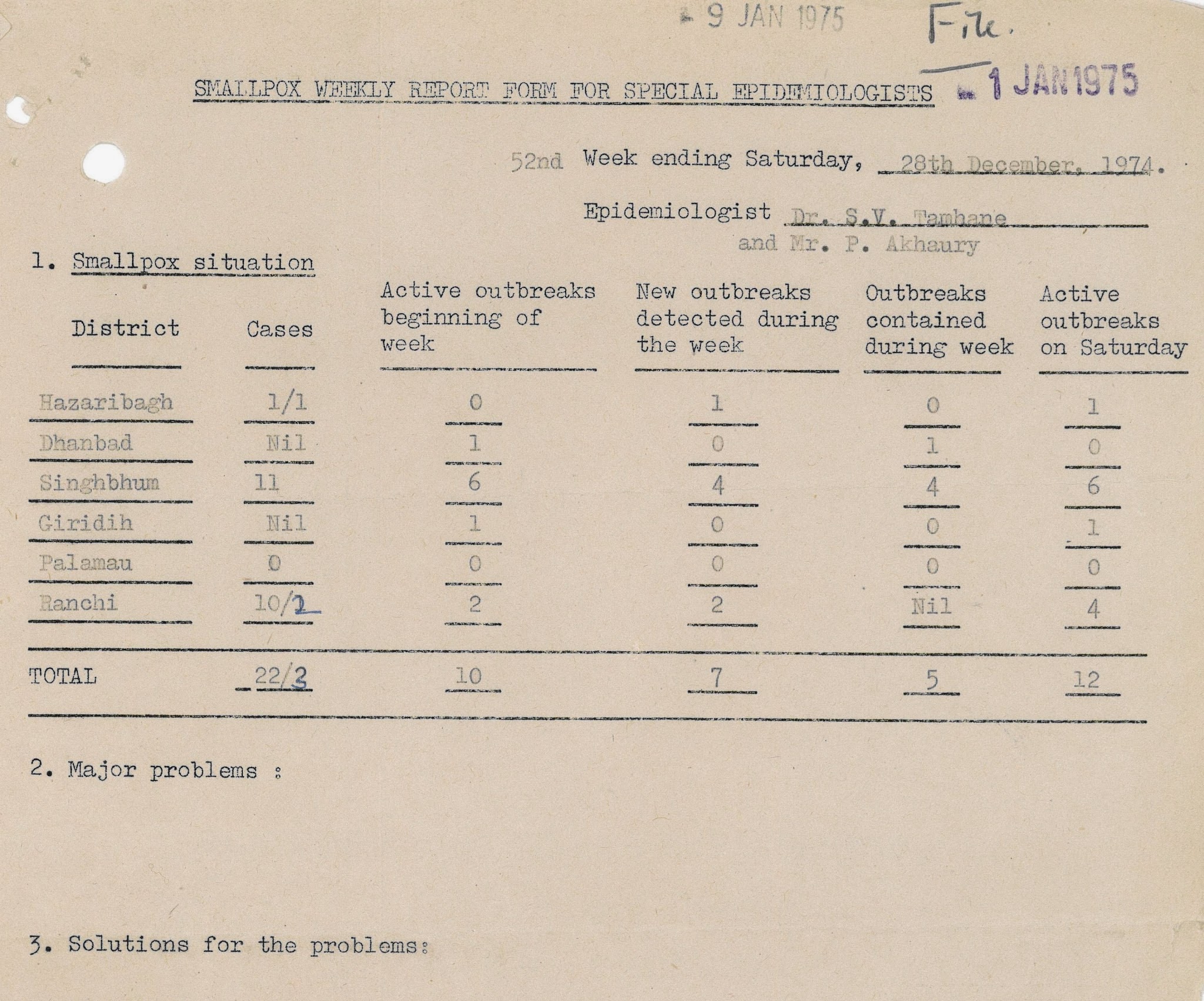 |
| Oxfam jeeps and vaccination teams at work, 1974 (MS. Oxfam PRF BIH 014 Vol. 1 = Box 101) |
Files in the Project files and Directorate sequences of the Oxfam Archive shed some light on Oxfam’s small yet important role in one of the major medical achievements of the twentieth century – the eradication of smallpox.
Smallpox was an acute contagious disease caused by the Variola virus, causing death in 30-35% of cases, and in other cases, complications including blindness, limb deformities and severe scarring. It was officially declared eradicated in 1980, following an immunization campaign led by the World Health Organisation (WHO).
Following the outbreak of a smallpox epidemic in Bihar state, India, in 1974, Oxfam sent its Medical Adviser, Dr. Tim Lusty, to make an emergency visit to the area in July of that year. On his recommendation and that of Oxfam’s Field Director for East India, R. Subramaniam, Oxfam made a grant of £42,193 towards the WHO campaign in the region. The funds were used for the provision of jeeps, plus salaries for drivers and mechanics and medical equipment, to be used by 14 of the programme’s 56 ‘search and containment’ teams in South Bihar. Oxfam also played a hands-on role, recruiting voluntary nurses and other volunteers and sending two of its staff members out to India to help administrate the project.
 |
| Weekly report on smallpox outbreaks, filed by the vaccination teams, 28th December 1974 (MS. Oxfam PRF BIH 014 Vol. 1 = Box 101) |
The search and containment tactic used by the teams of volunteers was key to the success of the Bihar Smallpox Eradication Programme. The teams comprised one medical officer, one assistant and 4-6 vaccinators, working under the supervision of two epidemiologists recruited by WHO. Rather than attempting mass vaccination, the programme concentrated on identifying individual cases of the disease, tracing the source of infection and containing it by vaccinating all contacts of the infected person.
This was often far from easy, as is revealed by a report from Oxfam field worker Suresh Kumar, dated 2 September 1974. Aside from early starts, long days and long journeys in difficult conditions, the teams often met resistance from the local people themselves:
“People are very much resisting vaccination because 1. They believe that they will have fever and cannot work. 2. They are afraid of the needles. 3. This is the first time in their lives they have been vaccinated, or if they have been vaccinated, it was a very long time ago. 4. The people think that the babies are too young to be vaccinated. 5. Small children run away and we have to chase them.”
Aside from Oxfam’s financial contribution to the project, the organisation made another, perhaps even more important contribution, in the form of a survey technique, based on studies carried out by Oxfam volunteers. The technique used local markets, which always drew large crowds, as venues for disseminating information about the disease and uncovering new outbreaks. The Oxfam volunteers wrote up detailed guidelines for those carrying out such surveys, based on what they had experienced.
| Guidelines for Market Surveys by Alan Marinis and Bev Spring, page 1, 1975 (MS. Oxfam PRF BIH 014 Vol. 1 = Box 101) |
The importance of the technique to the Bihar smallpox eradication programme is underlined in an undated copy of a letter from Dr. L.B. Brilliant, WHO Medical Officer, to R. Subramaniam, received 3 Mar 1975:
“This has proven to be one of the best methods we have for finding hidden cases of smallpox, and I have no doubt that this innovative technique will shorten the period necessary to find and contain all of the smallpox left in Bihar. We are very grateful to Oxfam for many things that you have given us, but this technique may prove to be the most valuable gift of all to the smallpox Programme.”
